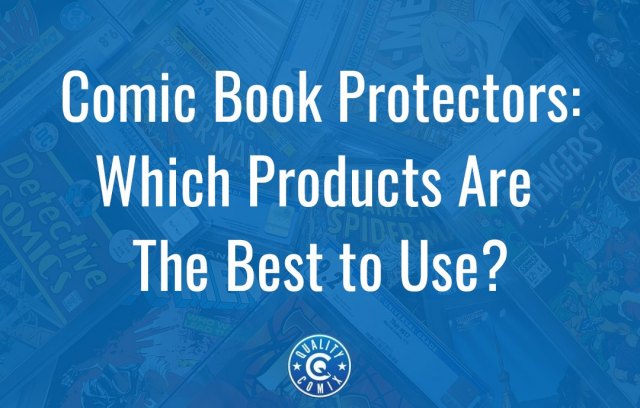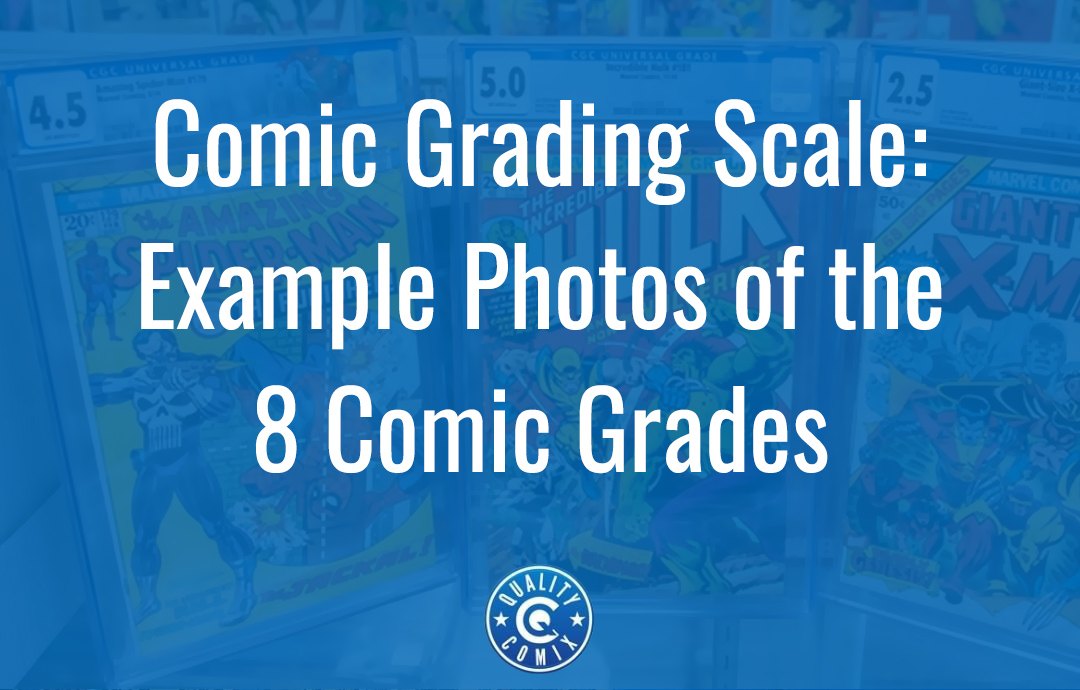
For comics with moderate to high value, getting them graded is an excellent option. It protects and preserves them, it validates they're real and aren't counterfeit, and it can even clean and press out minor blemishes to improve their condition. All of this improves the collectability and value of a comic in the eyes of most collectors.
At least, that's the theory. Sometimes, though, a comic with a relatively poor condition will get a low grade, and that could even make it less desirable than the raw comic. While there's plenty of debate over whether to get your comics graded and slabbed in the first place, one of the key data points you'll want to consider is what you expect the grade to be.
Of course, if you aren't a professional comics grader yourself, it can be very tricky to estimate the condition of a comic. That's why we've put together this guide. With some photographic comparisons, you can see what a comic looks like at various grades and estimate the grade range for your comics. Once you have some idea of what the grade will be, you can estimate how much it might be worth based on comparable comics being sold recently, and can determine if it's worth the cost, time, and investment to get the book graded at all.
So, let's look at what each grade means, what indicators there are of condition, and how you might estimate the condition of your own comics.
Table of Contents
- A Note on Grading Scales
- 0.5: Poor
- 1.0: Fair
- 1.5: Fair / Good
- 1.8: Good Minus
- 2.0: Good
- 2.5: Good
- 3.0: Good / Very Good
- 3.5: Very Good Minus
- 4.0: Very Good
- 4.5: Very Good Plus
- 5.0: Very Good / Fine
- 5.5: Fine Minus
- 6.0: Fine
- 6.5: Fine Plus
- 7.0: Fine / Very Fine
- 7.5: Very Fine Minus
- 8.0: Very Fine
- 8.5: Very Fine Plus
- 9.0: Very Fine / Near Mint
- 9.2: Near Mint Minus
- 9.4: Near Mint
- 9.6: Near Mint Plus
- 9.8: Near Mint / Mint
- 9.9: Mint
- 10: Gem Mint
A Note on Grading Scales
For the purposes of this post, we're using the CGC grading scale, which is publicly posted (without reference images) right here on their site. The images are examples of graded comics we've found and used to represent the grades.
Other grading companies have their own grading scales. While the scales are generally going to be similar, they might not be identical. These other grading companies want their grading to be comparable to CGC, so the grades mean more or less the same thing, but the people doing the grading may be more or less lenient on certain kinds of flaws and defects.

Image source: Google Images
The other thing to consider is that there's no algorithmic or robotic way to grade comics. They don't take high-resolution photos and run them through a grading robot or anything. It's just people who have a ton of experience in examining comics, making comparisons to the comics they've seen before, and judging them in the context of both other comics and the scale they work with. That is to say, it's at least somewhat subjective, and a comic you think is a 9.8 could be given a 9.6 due entirely to differences in perception. You never know unless you send them in to get them graded.
Now, let's dig in and talk about each step of the grading scale. The title of this post says the 8 comics grades, but we're getting more granular, all the way down to the decimals that CGC uses. Take a look!
0.5: Poor
Reference Image: https://www.ebay.com/itm/285095415731
What CGC Says: "A heavily defaced collectible with a number of major defects. Some pieces will also be missing."

The lowest possible grade assigned, you might assume that this means the comic is more or less trash. Nothing could be further from the truth, when we're talking about golden age and older comics. The comic pictured above is part of a pedigree collection and is worth tens of thousands of dollars, despite the grade. Old, sought-after comics, particularly those with unique value-added aspects like being part of a pedigree, are still very valuable.
1.0: Fair
Reference Image: https://www.ebay.com/itm/275601944912
What CGC Says: "A very poorly handled collectible with a heavy accumulation of major defects."
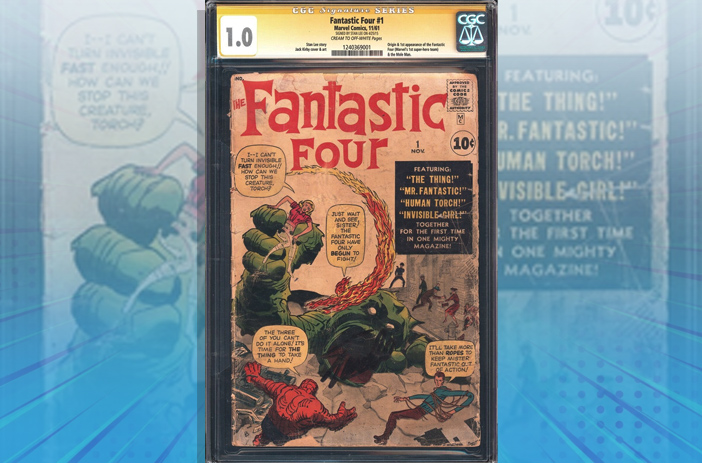
This is another example of how a value-add can save a comic with an otherwise low grade. A 1.0 isn't great, but it's also not atypical of comics of this age. This one was signed in the presence of CGC representatives (so the signature is verified), giving it even more value to those who love The Man's signatures. You can see how the pages are browned, and there are plenty of defects, but that doesn't matter for a rare comic to a collector in love.
1.5: Fair / Good
Reference Image: https://www.ebay.com/itm/155519903008
What CGC Says: "A collectible that shows extensive evidence of handling with a heavy accumulation of major defects."

This is a good example of what a low-grade comic looks like. The cover has a missing piece, there's evidence of tape previously on it, the cover is entirely detached (though that matters less when it's slabbed), and the pages are quite yellowed. All in all, it's still valuable because it's a very important and rare issue, but the condition isn't great.
1.8: Good Minus
Reference Image: https://www.ebay.com/itm/325574980837
What CGC Says: "A collectible that shows extensive evidence of handling with numerous major defects."
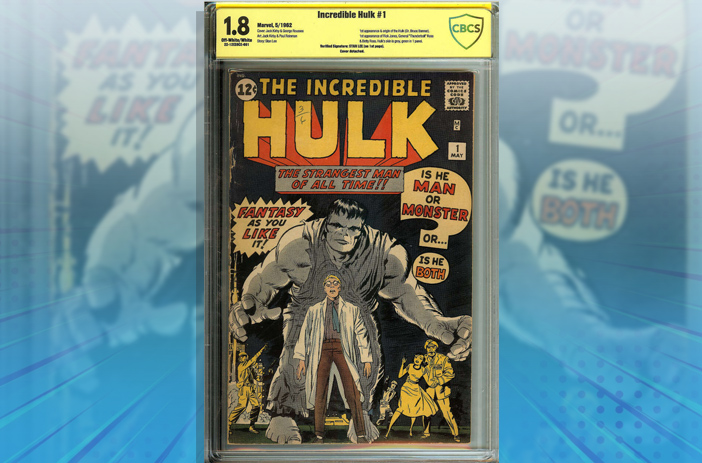
Here's another example of how some major defects can result in a lower grade than you might think it deserves. The cover is entirely detached, but does that really matter when no one is going to pull it from the slab in the first place? It's also signed by Stan Lee, but the signature isn't visible since it's internal. Still, it's verified, and on the grading, so it's gotta count for something.
2.0: Good
Reference Image: https://www.ebay.com/itm/225555976201
What CGC Says: "A collectible that shows extensive evidence of handling with numerous moderate-to-major defects."
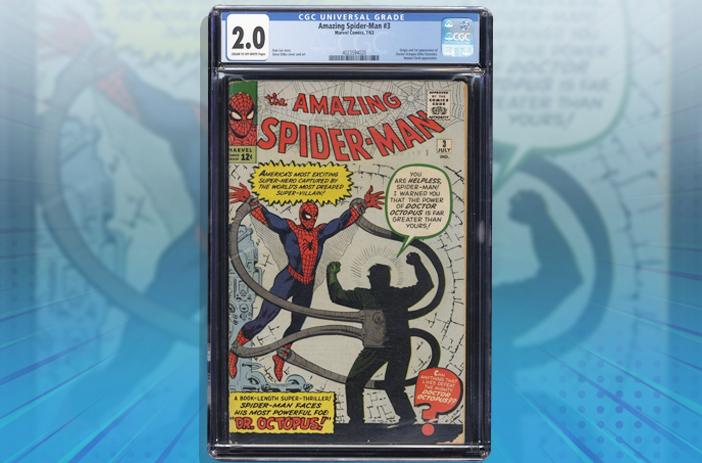
This is a two that doesn't look like a two, and shows you how "numerous defects" can add up. All of the little chips, creases, and wear marks might not stand out on their own, but they add up into a sub-par comic that nevertheless looks great as part of a collection.
2.5: Good
Reference Image: https://www.ebay.com/itm/295570125978
What CGC Says: "A collectible that shows extensive evidence of handling with multiple moderate-to-major defects."
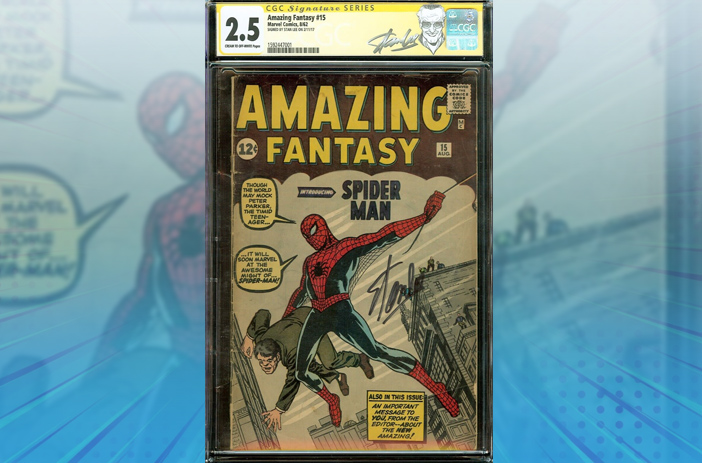
Noticing something here? Many of the most valuable low-grade comics are valuable because of their signatures or pedigrees, not because of the quality of the books themselves. This is a "good" comic, and it's pretty good indeed for its age, but you can still see the defects shining through, especially if you're detail-oriented.
3.0: Good / Very Good
Reference Image: https://www.ebay.com/itm/114918828373
What CGC Says: "A collectible that shows significant evidence of handling with several moderate-to-major defects."

Compare this to the previous example, and you can see how two comics that are virtually identical – the same comic, the same issue, the same signature in the same place – can have slightly different grades. A lot of factors go into the value of a comic. Does the different grading company make a difference to the value, or does the comic speak for itself? That's, in part, up to you.
3.5: Very Good Minus
Reference Image: https://www.ebay.com/itm/203316685352
What CGC Says: "A below-average collectible with several major defects or an accumulation of multiple moderate defects."
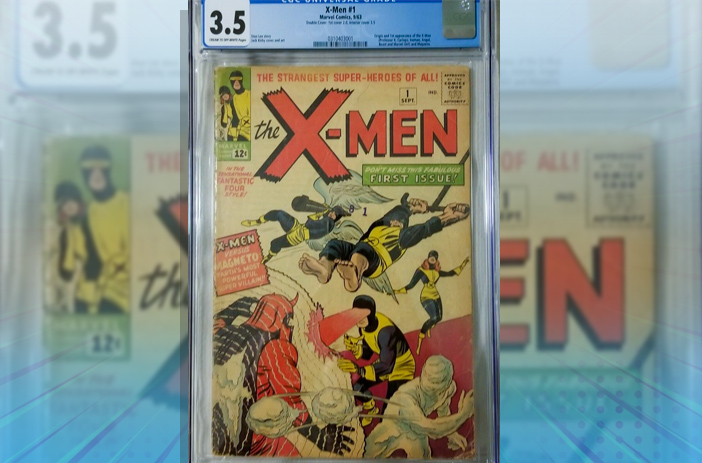
Despite getting a 3.5, this book is extremely valuable because it has two covers. It's a manufacturing defect, but it's one that is extremely rare, lending the book a high price tag.
4.0: Very Good
Reference Image: https://www.ebay.com/itm/166043957595
What CGC Says: "A below-average collectible with multiple moderate defects."

The 4.0 range is where you start seeing more modern comics that were enjoyed before they were slabbed, and this is a prime example. It has a few moderate problems, mostly along the spine and the edges of the pages, but it makes for an excellent display piece.
4.5: Very Good Plus
Reference Image: https://www.ebay.com/itm/134516782318
What CGC Says: "A slightly below-average collectible with multiple moderate defects."

The pictures on this listing aren't the best, but even so, you can still see moderate defects along the spine and across the edges of the pages; the book was read and enjoyed but not terribly damaged by that enjoyment.
5.0: Very Good / Fine
Reference Image: https://www.ebay.com/itm/166004174080
What CGC Says: "An average collectible with several moderate defects."

This is a unique example of a restoration grade. Some collectors hate these, while others love them, but for this particular book in this kind of condition, it's a rarity nonetheless. Even if a book looks good, a restored grade is always lower than the non-restored book in the same condition would be.
5.5: Fine Minus
Reference Image: https://www.ebay.com/itm/325415214986
What CGC Says: "A slightly above-average collectible with several moderate defects."

Take a look at all the little defects across the top and sides of this comic, and you can see why it has the grade it does. It was also signed by Stan Lee, but since it wasn't done in a verifiable way, the grade isn't a verified signature grade, and that can matter to some collectors.
6.0: Fine
Reference Image: https://www.ebay.com/itm/294037076150
What CGC Says: "A slightly above-average collectible with a major defect and some smaller defects, or a significant accumulation of small defects."

This is one of those books that looks like it should be a higher grade than it is at first glance, but then you notice the rolled spine and the wear in the corners, and you realize how much the details matter.
6.5: Fine Plus
Reference Image: https://www.ebay.com/itm/314557692766
What CGC Says: "An above-average collectible with a major defect and some smaller defects, or a significant accumulation of small defects."
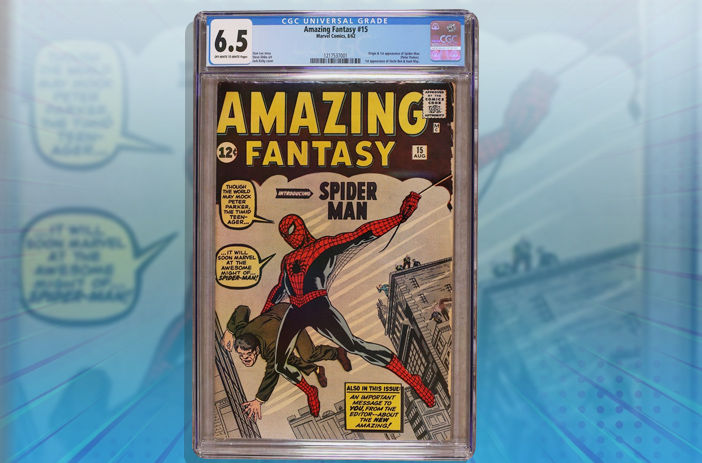
Check out the price tag on this Spider-Man! Despite extensive chipping along the right edge of the cover, the condition of this book is high compared to many of its contemporaries, making it a great example of a high-value book at a middling, above-average grade.
7.0: Fine / Very Fine
Reference Image: https://www.ebay.com/itm/285153270431
What CGC Says: "An above-average collectible with a major defect or an accumulation of small defects."
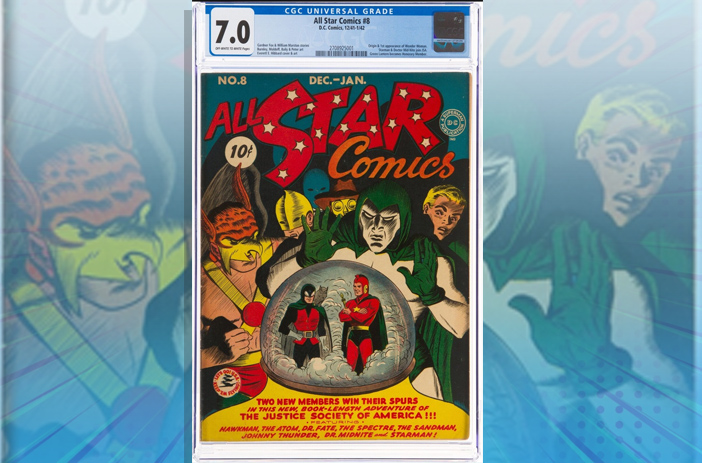
The damage to this book is more subtle and involves staining and fading more than it does wear and tear. It looks great, especially compared to lower grades, and that's why it gets what it gets.
7.5: Very Fine Minus
Reference Image: https://www.ebay.com/itm/263527921090
What CGC Says: "An above-average collectible with a moderate defect or an accumulation of small defects."

Ignore the "qualified" label for a moment and examine the condition to see a fairly high-quality comic with only small defects throughout. The Qualified label is something many collectors don't care for, but in this case, the comic is truly special because it's a DC comic inside with a Marvel cover, somehow done in manufacturing. Wild stuff!
8.0: Very Fine
Reference Image: https://www.ebay.com/itm/204201030148
What CGC Says: "An attractive collectible with a moderate defect or an accumulation of small defects."

Though labeled an 8.0, this comic looks like something higher at a glance. The damage is almost unnoticeable unless you know to look in the corner.
8.5: Very Fine Plus
Reference Image: https://www.ebay.com/itm/204252376690
What CGC Says: "An attractive collectible with a moderate defect or a number of small defects."
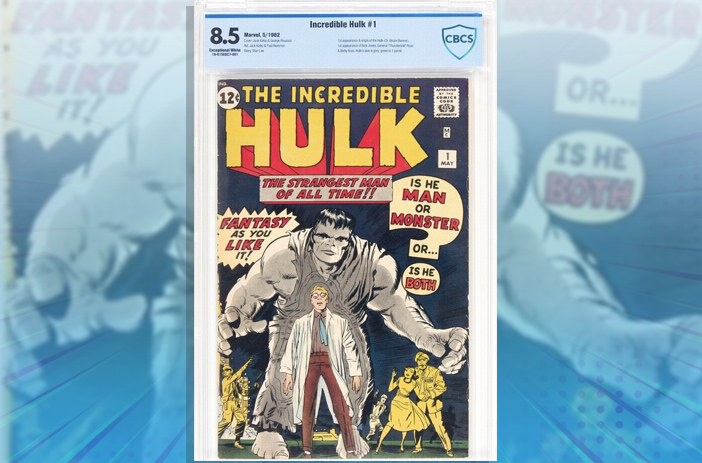
Compare this to some of the previous low-grade Hulks, and you can see the stark difference between a lower grade and a higher grade.
9.0: Very Fine / Near Mint
Reference Image: https://www.ebay.com/itm/324596257762
What CGC Says: "A very well-preserved collectible with good eye appeal. There will be a number of minor handling and/or manufacturing defects."
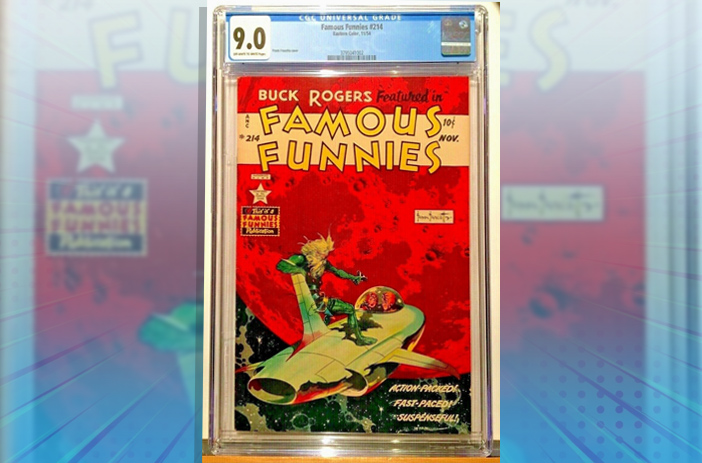
This is a very vibrant example of a high-grade comic, with the "good eye appeal" taking center stage.
9.2: Near Mint Minus
Reference Image: https://www.ebay.com/itm/264389765501
What CGC Says: "A very well-preserved collectible with some wear and small manufacturing or handling defects."

Double-signed, high quality, and it comes with a certificate of authenticity; what's more to love from this stunning example of a comic?
9.4: Near Mint
Reference Image: https://www.ebay.com/itm/295536314360
What CGC Says: "A very well-preserved collectible with minor wear and small manufacturing or handling defects."

Another easy comparison to lower grades, check out the vibrant colors on this one. It looks great, but it's restored, so you can see what good professional restoration can do.
9.6: Near Mint Plus
Reference Image: https://www.ebay.com/itm/304904505720
What CGC Says: "A very well-preserved collectible with several minor manufacturing or handling defects."

The differences in the 9s are all so minor it's hard to tell one from the next, but the professionals who do it day in and day out sure know how to tell. This is another professional restoration, but it's a great showpiece.
9.8: Near Mint / Mint
Reference Image: https://www.ebay.com/itm/392332392045
What CGC Says: "A nearly perfect collectible with negligible handling or manufacturing defects."

There's practically nothing wrong with this comic, and it shows. Plus, it's even a variant!
9.9: Mint
Reference Image: https://www.ebay.com/itm/294089278346
What CGC Says: "The collectible is nearly indistinguishable from a 10.0 but will have a very minor manufacturing defect. It will not have any evidence of handling defects."

What's the difference between a 9.9 and a 10.0? Practically nothing. In this case, it's almost entirely just the signatures.
10: Gem Mint
Reference Image: https://www.ebay.com/itm/266065830232
What CGC Says: "The highest grade assigned. The collectible must have no evidence of any manufacturing or handling defects."

At first glance, you might think this comic is dingy and discolored, but that's how it was meant to be printed. This is a pristine book, and you won't find one that looks better.
So, there you have it; a demonstration of what all of the CGC grades look like in practice. What do you think?

![[Guide] Where is the Best Place to Get Your Comics Graded?](https://www.qualitycomix.com/images/size_f/news-000079.jpg)
